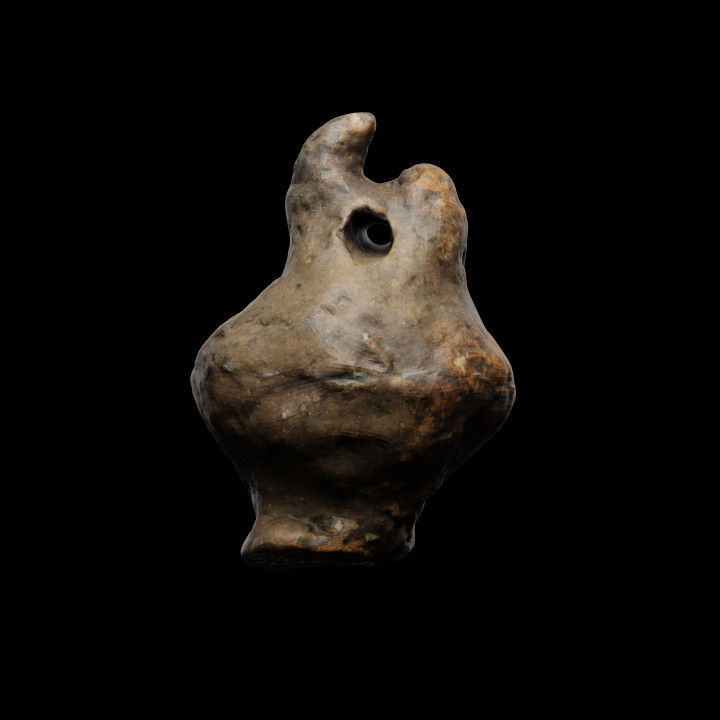
Rattle
myminifactory
The small two-cone clay rattle had two holes on the upper, flattened part, which were most likely used for hanging. One of them is currently damaged. The lower part of the instrument has a shape of a small foot. Inside there are eight tiny clay balls. It was extremely rare for archaeologists to find similar items at Neolithic sites in Poland. An incomparably greater number of such instruments, with more diverse forms, is dated to the next historical era – the Bronze Age. The presented exhibit is the only Neolithic rattle in the collections of the Archaeological Museum in Kraków. Another one, discovered before World War II, comes from Glinica (Wrocław District), the next one was found in Racibórz-Studzienna (site 150, building E18) during works preceding the construction of the polder on the Upper Odra River in 2012–2013 . However, these products have forms completely different from the Kraków rattle: the artefact from Glinica is quadrangular, decorated with engraved lines; the rattle from Racibórz, on the other hand, has a form reminiscent of a human figure.It is assumed that the Neolithic clay rattles are a certification of the contacts between the Lesser Poland communities with the Transcarpathian areas, with the environment of the area along the Tisza River or the Cucuteni culture located further south-east.A clay rattle is a product from the border of the impenetrable world of art, and beliefs of the New Stone Age societies, and at the same time a working musical instrument with a surprisingly loud sound. However, some aspects of everyday life in prehistoric communities, such as musical creativity elude archaeological research. The analysis of old instruments using solely classical typological classification methods is insufficient and hence there is a need for acoustic analyzes that will help explore the ways of “hearing the world” in prehistory. Archaeo-music deals with such acoustic analyses. This is a young, but dynamically developing field of research. Scientists are interested not only in the form and raw material of the instrument, but also in the range and pitch of sounds obtained when playing it. For unglazed clay rattles, this is an extremely wide frequency spanning 2 kHz to 23 kHz – sometimes even on the verge of the human ear's range of hearing. Therefore, if the rattle made very high or very low sounds, inaudible to the human ear, it could be treated as a protective object or one helpful in contacts with animals. The spectrogram analysis of the presented rattle was made by Katarzyna Tatoń as part of theArchaeological musical instruments in the collections of Polish museums project. Based on it, it was determined that the amplified frequencies are within a range starting with 10 kHz (fundamental frequency).
With this file you will be able to print Rattle with your 3D printer. Click on the button and save the file on your computer to work, edit or customize your design. You can also find more 3D designs for printers on Rattle.
